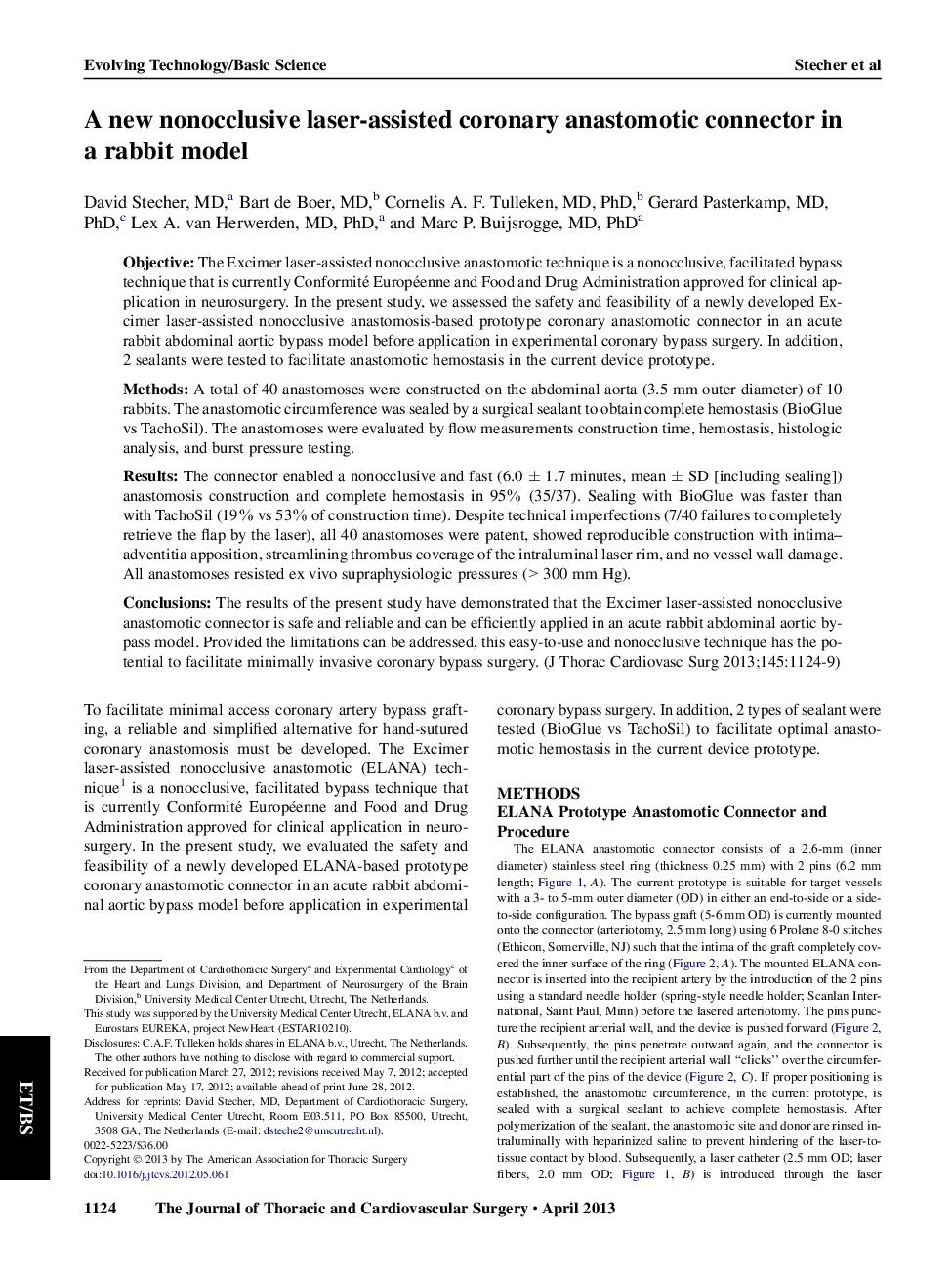| Article ID | Journal | Published Year | Pages | File Type |
|---|---|---|---|---|
| 5990043 | The Journal of Thoracic and Cardiovascular Surgery | 2013 | 6 Pages |
ObjectiveThe Excimer laser-assisted nonocclusive anastomotic technique is a nonocclusive, facilitated bypass technique that is currently Conformité Européenne and Food and Drug Administration approved for clinical application in neurosurgery. In the present study, we assessed the safety and feasibility of a newly developed Excimer laser-assisted nonocclusive anastomosis-based prototype coronary anastomotic connector in an acute rabbit abdominal aortic bypass model before application in experimental coronary bypass surgery. In addition, 2 sealants were tested to facilitate anastomotic hemostasis in the current device prototype.MethodsA total of 40 anastomoses were constructed on the abdominal aorta (3.5 mm outer diameter) of 10 rabbits. The anastomotic circumference was sealed by a surgical sealant to obtain complete hemostasis (BioGlue vs TachoSil). The anastomoses were evaluated by flow measurements construction time, hemostasis, histologic analysis, and burst pressure testing.ResultsThe connector enabled a nonocclusive and fast (6.0 ± 1.7 minutes, mean ± SD [including sealing]) anastomosis construction and complete hemostasis in 95% (35/37). Sealing with BioGlue was faster than with TachoSil (19% vs 53% of construction time). Despite technical imperfections (7/40 failures to completely retrieve the flap by the laser), all 40 anastomoses were patent, showed reproducible construction with intima-adventitia apposition, streamlining thrombus coverage of the intraluminal laser rim, and no vessel wall damage. All anastomoses resisted ex vivo supraphysiologic pressures (> 300 mm Hg).ConclusionsThe results of the present study have demonstrated that the Excimer laser-assisted nonocclusive anastomotic connector is safe and reliable and can be efficiently applied in an acute rabbit abdominal aortic bypass model. Provided the limitations can be addressed, this easy-to-use and nonocclusive technique has the potential to facilitate minimally invasive coronary bypass surgery.
